Sikkim, known as the jewel of the north-east Himalayas, is celebrated for its pristine natural beauty, and rich cultural heritage. Sikkim temples are a testament to the unique demography. The harmonious blend of nature and spirituality makes Sikkim an irresistible destination. These places showcase the profound faith ingrained in the people of Sikkim. Visitors often find themselves immersed in an atmosphere of peace enhanced by the natural beauty that surrounds it. Whether looking for spiritual indulgence or a breathtaking escape into nature, Sikkim temples are hidden beauties waiting to be discovered.
Top 13 Sikkim Temples
Traversing the lands of Sikkim to discover the rich cultural and architectural marvel of its temples is truly an adventure in itself. Here are some of the important temples in Sikkim:
1. Kirateshwar Mahadev Temple
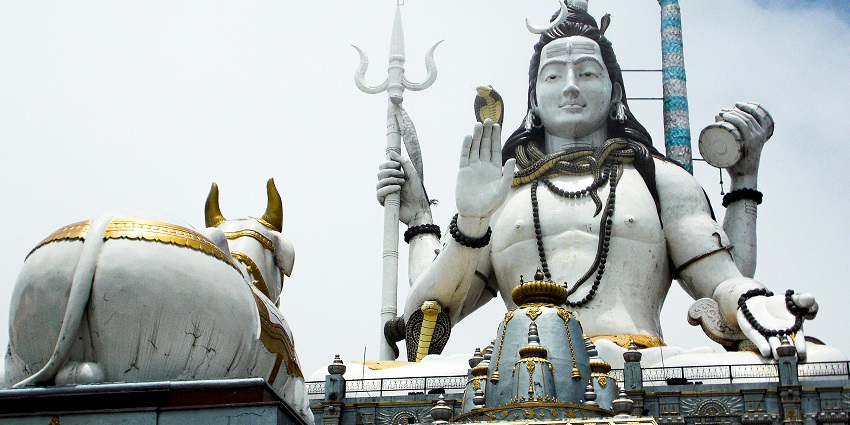
Photo: spandan pattanayak / Unsplash / Image For Representation Only
Sitting on the banks of the Rangit River, this temple can only be reached by crossing a suspension bridge over the river. It is one of the famous temples in Sikkim, and popular lore says that the temple was built on the place where Lord Shiva appeared in front of Arjuna in the form of Kirateshwar to bless him with success in the Mahabharat war. The main effigy worshipped here is the Shiv Ling. It is considered highly auspicious, and believers travel long distances to wish for the good health and fortune of their families and loved ones.
Location: Legship, Sikkim 737111
Timings: 5 AM – 6 PM
Suggested Read: Top Offbeat Places In Sikkim For Your Next Surreal Trip
2. Sai Temple
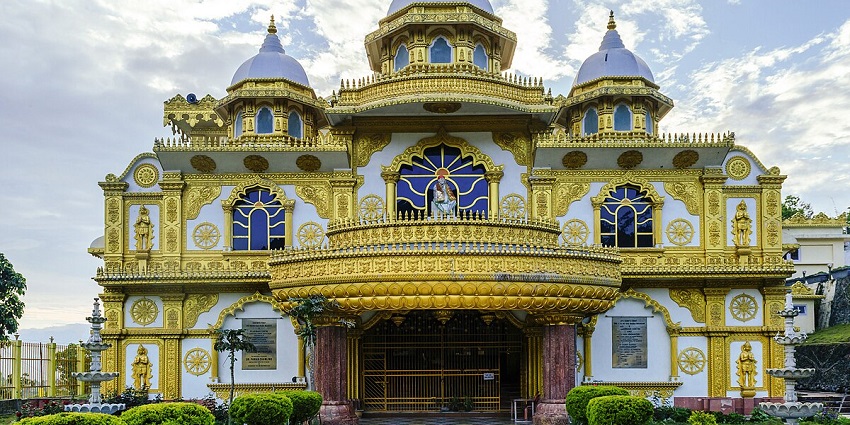
Photo: Subhrajyoti07 / Wikimedia Commons
A beautiful temple in Sikkim with modern white and gold aesthetic architecture, this structure is sure to take one’s breath away. This temple is dedicated to Shri Sirdi Sai Baba. There is a huge statue of Sai Baba on the first floor, along with 10 paintings that depict the 10 reincarnations of lord Vishnu. If you visit the Sai Temple at sunrise, you will find the sun rays falling on the intricate gold details giving it an ethereal glow. The third-highest mountain in the world, Mt. Kanchendzonga, is also visible here.
Location: Namchi, Sikkim 737126
Timings: 8 AM – 5 PM
3. Char Dham Temple
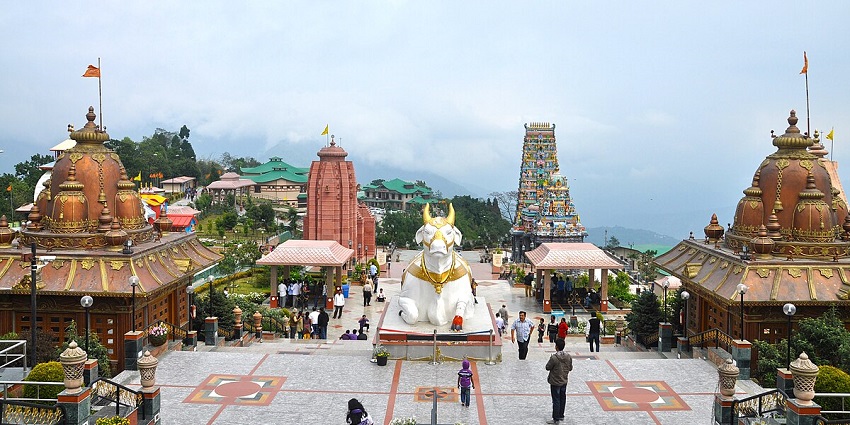
Photo: Prof Ranga Sai / Wikimedia Commons
One of the most unique places in India, Char Dham temple is a sprawling 7-acre pilgrimage complex in Sikkim. This famous temple in Sikkim houses a replica of all four important Dhams of the Hindu religion — Badrinath (Uttarakhand), Dwarka (Gujarat, Jagannath), Lord Jagannath (Puri, Odisha), and Rameswaram (Tamil Nadu) — at one place. At its heart is a massive Shiva Statue, with 12 jyotirlingas surrounding it, creating an atmosphere of peace and harmony. Visiting all the temples and towers and offering prayers is considered extremely sacred and brings good luck to one’s life.
Location: Namchi – Namthang Rd, Agam Gram, Namchi, Rhenock, Sikkim 737126
Timings: 6:30 AM to 8 PM
Suggested Read: Best Places To Visit In Sikkim In May For A Serene Trip
4. Buddhist Temple
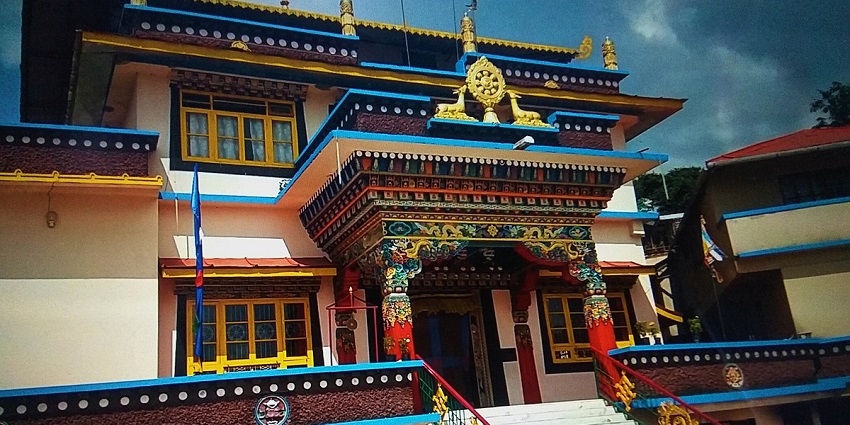
Photo: Sneha Yadav / Wikimedia Commons / Image For Representation Only
Sikkim is known for its rich Buddhist heritage and is home to several prominent Buddhist temples and monasteries. The temple features traditional Tibetan architecture, a Golden Stupa, and a collection of rare artefacts and scriptures. There is a beautiful garden surrounding it where tourists and pilgrims can take a stroll and take in the picturesque surroundings of the Sikkim Himalayas. The monastery hosts the annual Pang Lhabsol festival, where monks perform masked dances. The festival includes carnivals, lama warrior dances, cultural performances, and traditional Sikkimese food that visitors can indulge in.
Location: Ravangla, Sikkim 737139
Timings: 9 AM – 6 PM
5. Japanese Temple
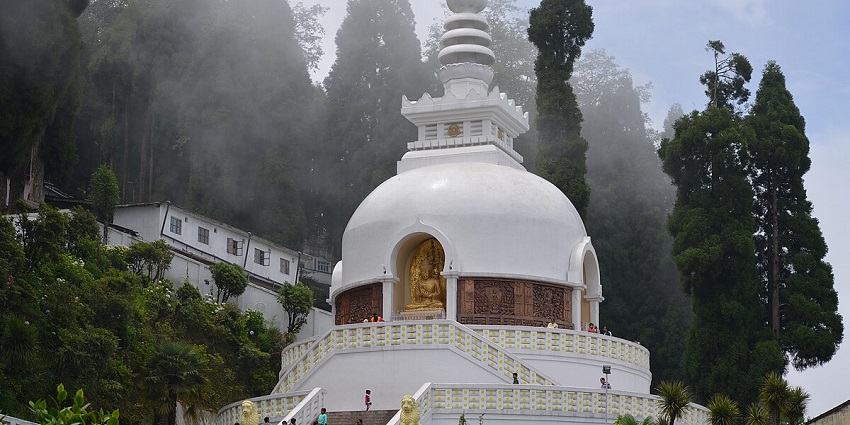
Photo: am utkkarsh / Wikimedia Commons
The Japanese Temple in Sikkim, often referred to as the Do-Drul Chorten, is a significant Buddhist stupa located in the Gangtok area. The Do-Drul Chorten is one of the most important stupas in Sikkim. It contains rare mandalas, relics, and other holy objects. Surrounding the stupa are 108 prayer wheels inscribed with Buddhist mantras. Visitors can spin these wheels while reciting prayers for good fortune and spiritual well-being or practice meditation in the halls. The best time to visit is during the spring and autumn months when the weather is pleasant.
Location: Rajbari, Darjeeling, West Bengal 734102
Timings: 4:30 AM – 7 PM
Suggested Read: Places To Visit In Sikkim In December For Your Next Winter Holiday
6. Vishwa Vinayak Temple
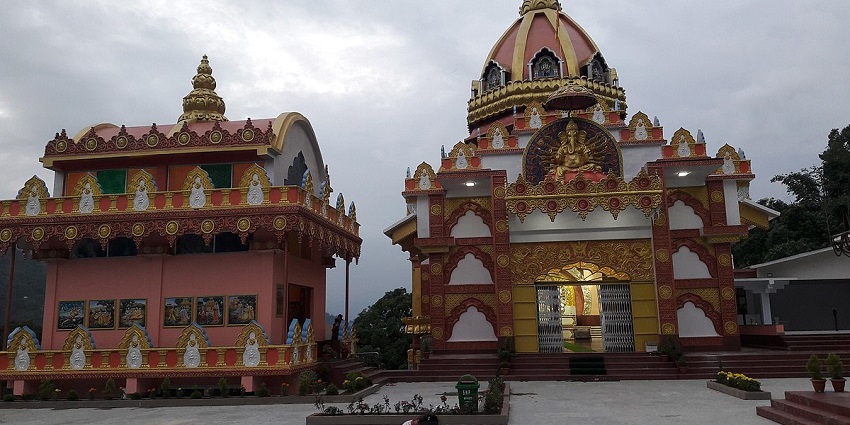
Photo: Masoom321 / Wikimedia Commons
With the majestic golden statue of Lord Ganesha welcoming you at the entrance, this popular temple in Sikkim cannot be missed. The Vishwa Vinayak Temple features traditional Hindu temple architecture, with colourful exteriors and intricate designs typical of North Indian temple styles. Its proximity to MG Marg makes it accessible to both locals and tourists, adding to its popularity as a place of worship and cultural significance in Gangtok. The temple is surrounded by serene natural beauty, enhancing the spiritual experience for visitors.
Location: Rhenak, Reshi, Sikkim 737133
Timings: 9 AM – 10 PM
7. Pemayangtse Temple
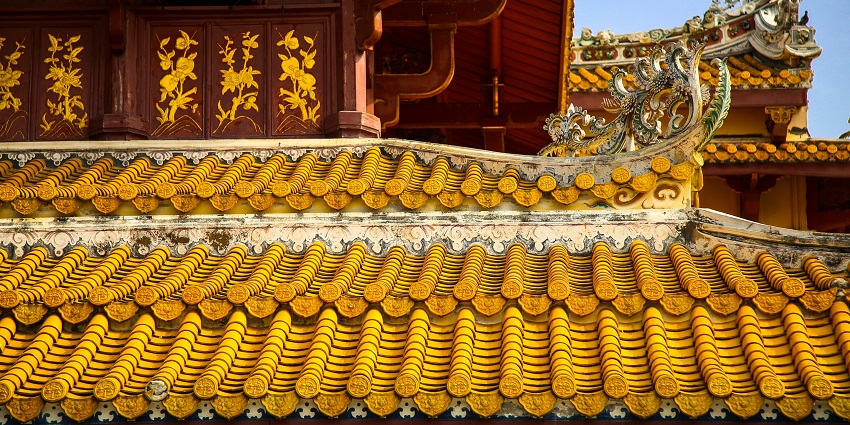
Photo: Graphic Node / Unsplash / Image For Representation Only
Established in 1705 by Lama Lhatsun Chempo, one of the revered Lamas who performed the consecration ceremony of the first Chogyal (king) of Sikkim, Pemayangtse Temple is a must-visit. The monastery houses numerous ancient religious artefacts, thangkas, and statues, including a seven-tiered painted wooden structure depicting Guru Rimpoche’s heavenly palace. Visitors can witness daily prayers and rituals conducted by resident monks. The monastery also celebrates several festivals, including Losar (Tibetan New Year) and Chaam (masked dance) during Pang Lhabsol, a unique festival honouring Mount Kanchenjunga.
Location: Sikkim 737111
Timings: 10 AM – 5 PM
Suggested Read: Top Places To Visit In East Sikkim For An Incredible Experience
8. Samdruptse
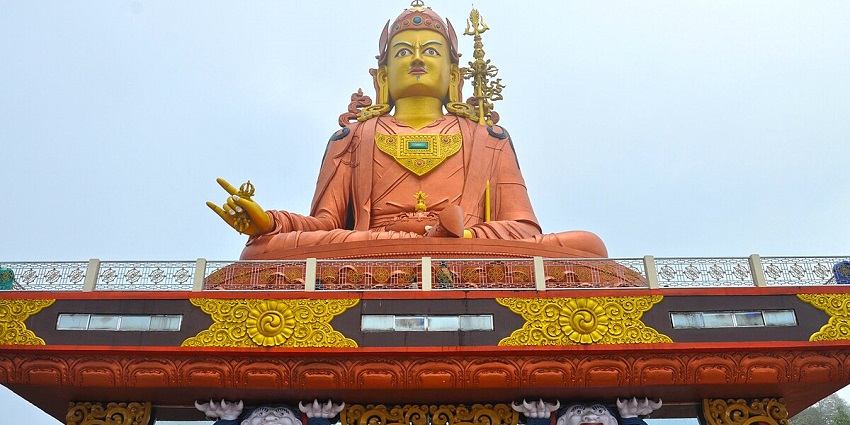
Photo: Prof Ranga Sai / Wikimedia Commons
Samdruptse, located near Namchi in Sikkim, is famous for its impressive statue and its religious significance. The towering statue of Guru Padmasambhava measures 118 feet (36 metres) in height. It is the largest statue of the Guru in the world. The climb up the stairs is considerably high but worth the effort. Huge rotating bells line the pathways, ringing, which is considered to bring good luck. Visitors can enjoy light snacks in the surrounding perimeters at the local shops.
Location: Namchi, Sikkim 737126
Timings: 9 AM – 5:30 PM
9. Hanuman Tok
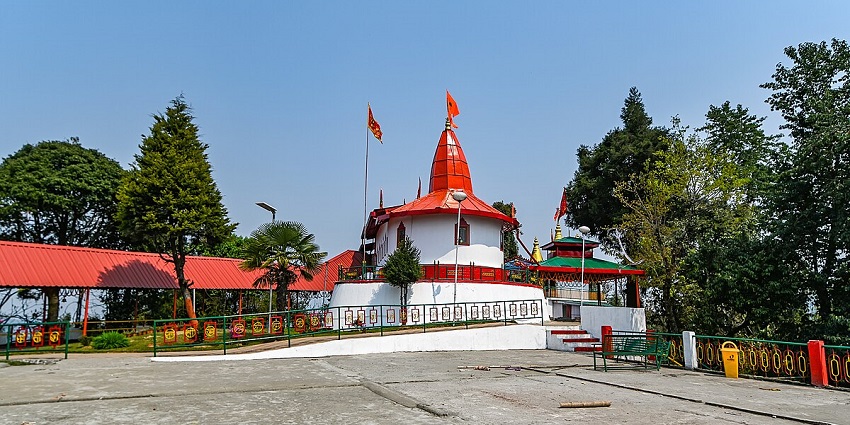
Photo: Anjan Kumar Kundu / Wikimedia Commons
Hanuman Tok is another notable religious site in Sikkim, known for its scenic location and spiritual significance. It offers views of the mesmerising Nathula Pass from its premises. The temple itself is small but beautifully maintained. It is adorned with colourful flags, flowers, and religious symbols typical of Hindu temples. A steep road cuts through the hills and leads up to the temple. The temple is open throughout the year, but the best time to visit is early morning or late afternoon to witness the sunrise or sunset over the mountains.
Location: Gangtok, Sikkim, India
Timings: 5 AM – 8 PM
Suggested Read: Best Places To Visit In North Sikkim For A Refreshing Tranquility
10. Ganesh Tok
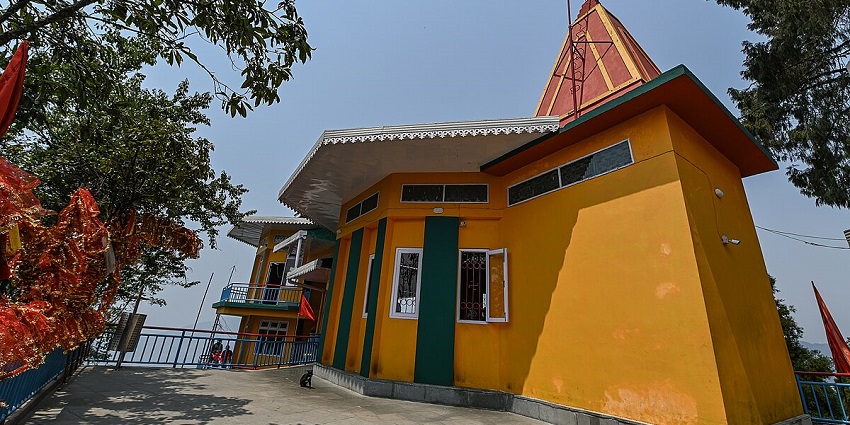
Photo: Anjan Kumar Kundu / Wikimedia Commons
A popular religious site, this temple is dedicated to the Lord Ganesha. The temple is accessible via a short drive from Gangtok. From the parking area, visitors need to climb a few steps to reach the temple premises. Ganesh Tok is not only a place of worship but also a symbol of faith and devotion for locals and tourists alike. It offers a serene escape from the bustling city life of Gangtok and provides a spiritual retreat amidst nature’s beauty.
Location: Jawaharlal Nehru Rd, Sungava, Gangtok, Sikkim 737103
Timings: 9 AM – 7 PM
Entry Fee: Free
11. Thakurbari Temple
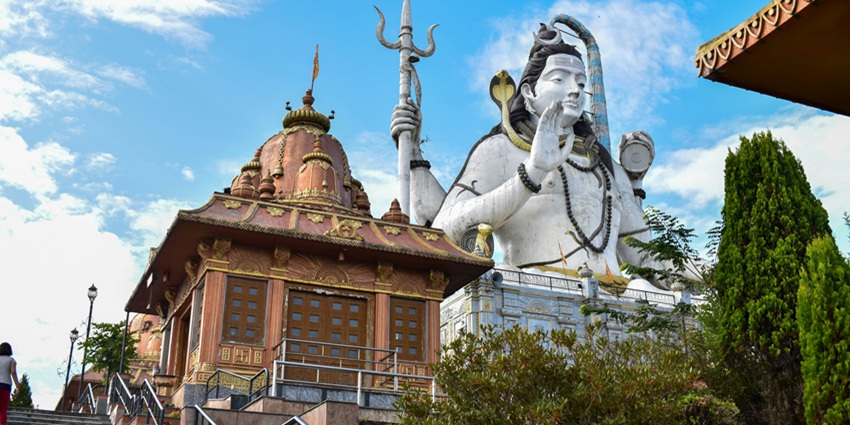
Photo: Debarghya Meikap / Unsplash / Image For Representation Only
Nestled in the bustling heart of Gangtok, Thakurbari Temple, meaning “House of Gods”, is a sacred and historical gem and one of the top Sikkim monasteries. Thakurbari Temple stands among the oldest Hindu shrines in the region, embodying both devotion and cultural significance. The temple’s architecture resembles a Buddhist pagoda with multi-tiered domes and ornate carvings. For visitors seeking a spiritually awakening experience, Thakurbari Temple is the perfect place.
Location: Mahatma Gandhi Marg, Arithang, Gangtok
Timings: 6 AM – 8 PM
Suggested Read: Explore Places To Visit In Pelling
12. Baba Harbhajan Singh Temple
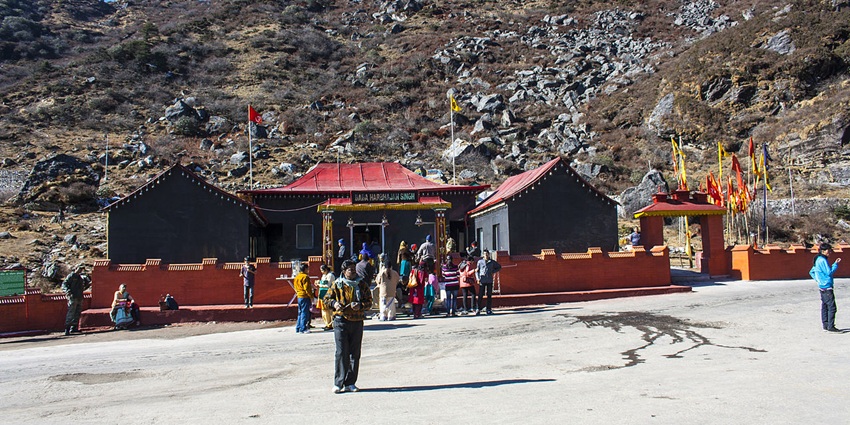
Photo: Indrajit Das / Wikimedia Commons
Nestled high in the Himalayas between Nathula and Jelepla Passes, the Baba Harbhajan Singh Temple is one of the top places to visit in Sikkim. The temple honours Sepoy Harbhajan Singh of the Indian Army’s 23rd Punjab Regiment, who tragically died in 1968 while escorting a mule column near Nathula Pass. Surrounded by snow-draped peaks and rugged passes, the shrine offers both spiritual reflection and breathtaking vistas of the Himalayas.
Location: Between Nathula Pass and Jelepla Pass
Timings: 8 AM – 5 PM
13. Siddheshwar Dham
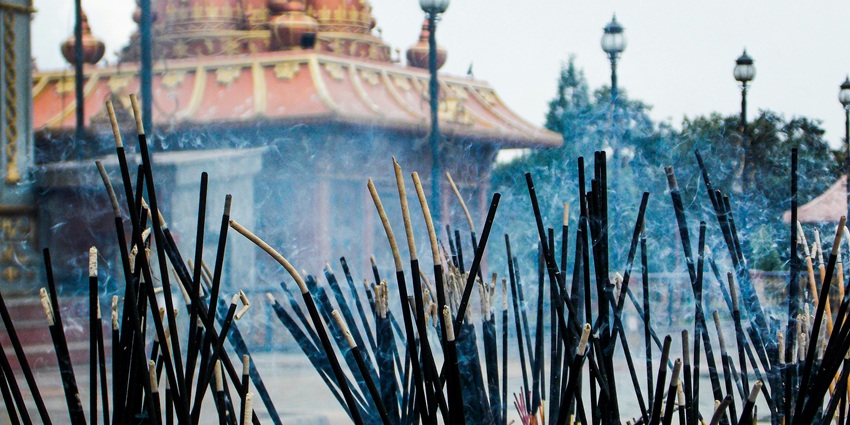
Photo: spandan pattanayak / Unsplash / Image For Representation Only
Nestled atop Solophok Hill, just 5 km southwest of Namchi in South Sikkim, Siddheshwar Dham is a spiritual complex. The highlight of this place is the 108-foot-tall statue of Lord Shiva that exudes grandeur and elegance. In homage to India’s sacred pilgrimage tradition, the complex houses life-size replicas of the four major Char Dham shrines—Badrinath, Dwarka, Jagannath Puri, and Rameswaram, along with 12 Jyotirlinga shrines and a 17-foot figure of Kirateshwar. One of the top things to do in Sikkim is to explore this dham for a spiritual retreat.
Location: Solophok Hill, Sikkim
Timings: 6 AM – 9 PM
Suggested Read: Places To Visit In South Sikkim
Temples in Sikkim offer something truly special. Visiting these temples provides a glimpse into Sikkim’s spiritual and cultural ethos, making them a must-visit for travellers interested in history, architecture, and religious traditions. Visitors can explore these hidden gems, immersing themselves in their stories and being touched by the magic they weave. Discover exclusive deals and curated packages for your Sikkim trip on TripXL.
Cover Photo: Debarghya Meikap / Unsplash / Image For Representation Only


 WhatsApp
WhatsApp
 Twitter
Twitter









